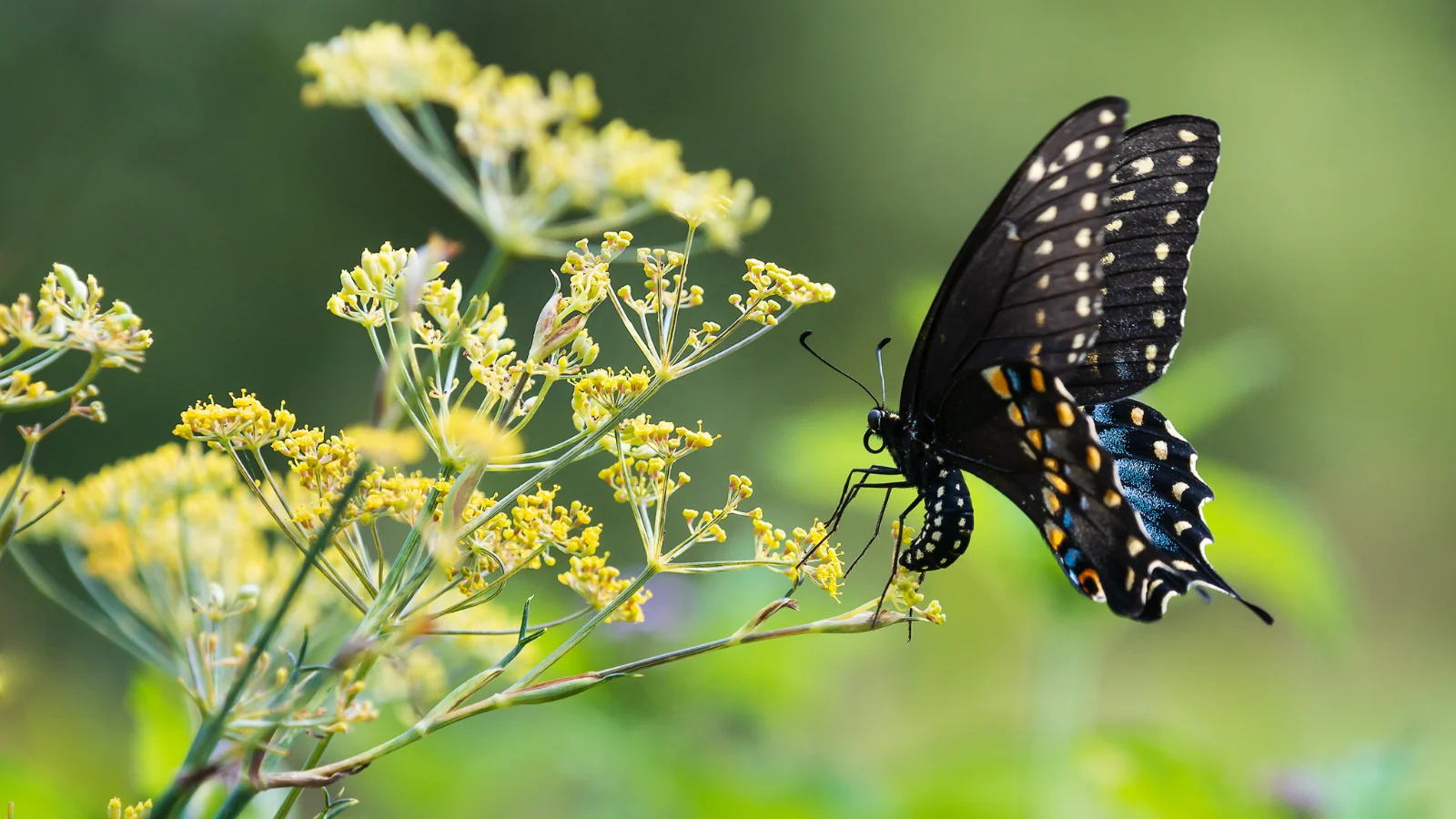
Big, Beautiful Swallowtails
Swallowtails are the flamboyant rockstars of the butterfly world! They are large, colorful and frankly spectacular butterflies in the family Papilionidae which contains around 580 species. Some have beautiful “swallow-tailed” wings, and they come in colors from metallic hues to bright blue, red, green, yellow and everything in between.
The Queen Alexandra is not only a beautiful example of swallowtails, but it is also the largest butterfly in the world with a 10-inch wingspan! The Natural History Museum in London famously holds a specimen of this species with bullet holes – this specimen was shot out of the sky by an English naturalist and explorer in the early 1900s (using special ammunition to limit damage).
If nothing else, this clearly shows that swallowtails have long sparked the imagination of naturalists worldwide. Birdwings, especially, as they are the largest members of the swallowtail family. And if you don’t believe us, here are the words of British naturalist Alfred Russel Wallace (who also came up with the theory of evolution through natural selection around the same time and independently of Charles Darwin) describing his feelings on capturing his first birdwing butterfly. “I had a headache the rest of the day, so great was the excitement produced by what will appear to most people a very inadequate cause.” We’ve all been there, Alfred!
Here in Indiana, you may get a headache from the excitement of spotting an eastern tiger swallowtail (Papilio glaucus) fluttering through forests, gardens and parks in search of nectar. Or the pipevine swallowtail (Battus philenor) on its quest to lay its eggs on – you guessed it – pipevines (Aristolochia spp). No extra marks for guessing where the spicebush swallowtail (Papilio troilus) may lay its eggs (although it also utilizes other plants apart from spicebush). Other swallowtails found in Indiana are the beautifully striped zebra swallowtail (Eurytides marcellus) and the black swallowtail (Papilio polyxenes), which is surprisingly colorful given its name! The giant swallowtail (Papilio cresphontes) is the largest butterfly in the United States.
June is a busy month for butterfly enthusiasts in the northern hemisphere! Not only are our butterflies flying in full force, it’s also the time of year when we celebrate the most flamboyant of them all – the swallowtails! World Swallowtail Day, held each year on the first Saturday in June, was created by the Swallowtail Birdwing and Butterfly Trust (SBBT) to celebrate the beauty of swallowtail butterflies and to highlight the threats they face. But for all of us—the SBBT, the Indianapolis Zoo’s Global Center for Species Survival, and the IUCN SSC Butterfly & Moth Specialist Group which we support day-to-day—every day is swallowtail day.
The Butterfly & Moth Specialist Group is carrying out a reassessment of the global status of these charismatic species through the Global Swallowtail Assessment project. Last comprehensively assessed in 1985, with a subsequent global action plan produced in 1991, it is high time to update our knowledge base on the extinction risk of swallowtails so we can produce updated conservation plans.
Since the project began in 2018, 219 species have been assessed or reassessed for the IUCN Red List of Threatened Species, specifically the birdwing butterflies that so excited Alfred Russel Wallace, large numbers of species from North and South America, South and Southeast Asia, Australia, and the high-altitude or high-latitude Apollo butterflies. So far, around 10% of species have been assigned a threatened category on the IUCN Red List, with 10 listed as Endangered and 11 as Vulnerable. Another 20 species are listed as Near Threatened and may move into threatened categories if pressures on these species continue. Data Deficiency so far is remarkably low, with only six species categorized as Data Deficient. This is no doubt a result of the popularity and appeal of swallowtails.
However, surprises can and do still happen! The Natewa swallowtail (Papilio natewa) is a recently discovered species endemic to the Natewa peninsula of the Fijian island of Vanua Levu. It is one of only two swallowtail butterfly species known from Fiji. In 2017, a photo was taken of a specimen feeding on the nectar on an invasive flower, and there were discussions about the authenticity of the photo, given that it seemed remarkable that such a large butterfly could remain undiscovered for so long. Researchers from the Swallowtail and Birdwing Butterfly Trust (SBBT), along with Operation Wallacea, carried out additional fieldwork, confirming that the species is indeed new to science! There is little information on the threats to this species, since we only recently learned about its existence as well as its ecology such as host plants; however, since it has a strong association with forests, the loss of primary forest, especially due to conversion to agriculture, may be a particular threat. It is yet to be established if the species occurs more widely on Vanua Levu, but the Natewa peninsula has a history of endemic species (species that are found nowhere else). The species has since been assessed as Vulnerable due to its restricted distribution.
So far, the Global Swallowtail Assessment has shown that the predominant threats to these beautiful species are clearance of forest habitat for agriculture and specimen collecting for trade. Several species, including the flamboyant birdwings, are subject to trade regulations under the Convention on International Trade in Endangered Species of Wild Fauna and Flora (CITES). Pollution and invasive species also pose threats, including non-native and invasive species mimicking larval host plants. For example, the Richmond birdwing (Ornithoptera richmondia, Near Threatened) is threatened by the introduced pipevine Aristolochia elegans, which mimics the native pipevine food plant, but is toxic to the larvae. This highlights one of the threats posed by invasive species and the importance of planting native species.
As for our above-mentioned Indiana swallowtails, the pipevine swallowtail, black swallowtail, and giant swallowtail are assessed as Least Concern given their huge distributions across North America which also range into Central (pipevine swallowtail) and South America (black swallowtail). The others are awaiting final review of their assessments but should soon flutter onto the IUCN Red List, likely as Least Concern unless there are population trend data which show worrying declines. In short, the story continues, so keep an eye out for World Swallowtail 2026 to learn more!
This blog was a collaboration between experts at the Global Center for Species Survival, including Freshwater Conservation Coordinator Dr. Monika Böhm. We’re also grateful to the IUCN SSC Butterfly & Moth Specialist Group for their contributions.
Published June 26, 2025

